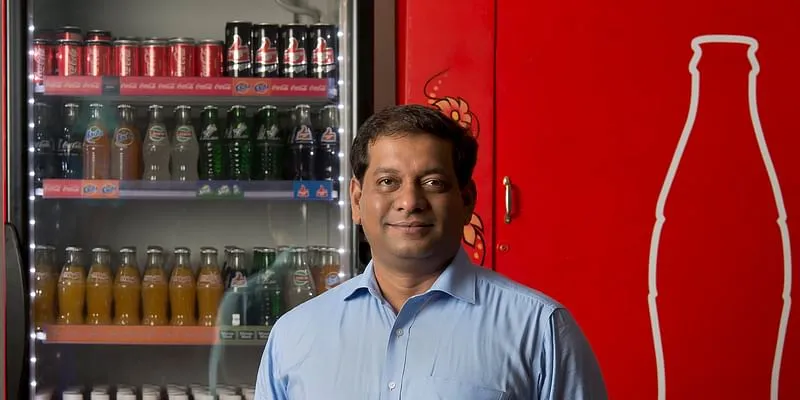How this Coca Cola India manufacturer leveraged Swiggy, Dunzo to deal with COVID-19 impact
Hindustan Coca-Cola Beverages (HCCB) manufactures Coca Cola, Thums Up, Maaza, Fanta, Limca, etc., and relies heavily on out-of-home consumption. The COVID-19 pandemic has forced a rethink, and delivery services like Swiggy and Dunzo may be the solution.
For years, out-of-home consumption used to bring the majority of business for FMCG manufacturer Hindustan Coca-Cola Beverages (HCCB). The brand, which was incorporated in 1997, is responsible for manufacturing, packaging, distribution, selling, merchandising, and market execution for Coca Cola India’s products.
HCCB manufactures Coca Cola, Thums Up, Maaza, Minute Maid, Fanta, Limca, Kinley, etc., and usually saw most sales coming from restaurants, bars, stalls, and retail outlets. Further, its distribution strategy was a standard FMCG practice —HCCB operated through an extensive network of 3,500 distributors and 2.5 million retail outlets.
However, the COVID-19 pandemic forced a rethink. Amidst a nationwide lockdown, restaurants, retail stores, and other out-of-home consumption places shut temporarily or resorted to delivering goods directly to customers.
“Kiranas and ecommerce platforms emerged as big points of sale for daily essentials. This shift was understandable, given the other two major channels — E&D (eating and dining, or simply restaurants) and convenience stores (like chai shops) — were temporarily out of business. We saw a dramatic increase in grocery consumption as people preferred to stay indoors,” says Dinesh Jadhav, Executive Director, Marketing Operations, HCCB, in an interview with SMBStory.
Swiggy and Dunzo partnerships
Anticipating a significant increase in demand through ecommerce, HCCB began focussing its distribution through food aggregators and delivery services. For this, it tied up with and in select markets to reach consumers directly.
Although Dinesh doesn’t disclose any pre-COVID numbers or sales figures from HCCB’s direct-to-consumer (D2C) channel, he says the Dunzo and Swiggy partnerships have become an integral part of HCCB’s daily operations at present. In 2019-20, HCCB reported overall revenue of Rs 9,789 crore.
In fact, HCCB also made its products available on the e-marketplaces of hypermarkets and supermarkets, as well as addressed the demand from housing colonies and resident welfare associations for large apartment complexes.
“Given that out-of-home consumption has been out of business for most of the year, the D2C channels have helped in at least getting the beverages delivered home. In the past few months, this channel has picked up well. Though it is still at a nascent stage, we plan to monitor the trend and build on it,” he says.

Dinesh Jadhav, Executive Director, Marketing Operations, HCCB
Impact on production
With the out-of-home consumption reduced, HCCB does not need to manufacture at peak capacity. This has brought respite to its 15 factories — spread across east, west, and south India — that went through a difficult time when the nationwide lockdown was announced in late March last year.
“We had to face the challenge of stopping work at our factories almost without notice. Stoppage of work inside a factory does not simply involve switching off the electricity; it entails detailed planning and careful attention to every process, parameter, and equipment,” Dinesh explains.
He adds, “Although beverage factories have relatively uncomplicated operations, there is a huge focus on hygiene and safety of products and people.”
As the lockdown was lifted in stages and operations resumed, Dinesh and HCCB ensured the factories operated under the safety precautions prescribed by the Indian government and regulatory authorities. HCCB also stopped entertaining factory tours for educational or research purposes.
The way forward with D2C
Historically, out-of-home consumption has generated the highest margins and sales for FMCG brands in India. However, the pandemic has dealt a blow to their P&L. HCCB has identified and targeted at-home consumption, which is presently showing a spike.
Other large FMCG companies, including PepsiCo India, , HUL, and P&G have adopted a similar D2C strategy. The way forward for these FMCG brands remains in leveraging ecommerce networks and diverting supplies to tap into the growing demand for at-home consumption.
Simultaneously, online delivery of grocery and daily essentials has picked up. launched Flipkart Quick to enable a 90-minute delivery model for over 2,000 products in categories such as grocery, fresh, dairy, meat, mobiles, and more.
Swiggy unveiled a new grocery and daily essentials delivery service called Instamart to deliver essential items within 30-45 minutes.
“On such services, we are seeing an increased preference for packaged items, including packaged water and packaged juices, at home. Further, a lot of people have gone back to their ancestral homes or villages, and their parents’ places in smaller towns. This has led to an increase in consumption of food and beverages in rural India as well,” says Dinesh.
So far, HCCB’s D2C channel has pointed towards a higher salience towards its premium portfolio. The next piece of the puzzle for HCCB is reaching customers in rural India while also focussing on its premium portfolio. And Dinesh is willing to wait and watch for more insights before building on these initial trends.
Edited by Suman Singh








